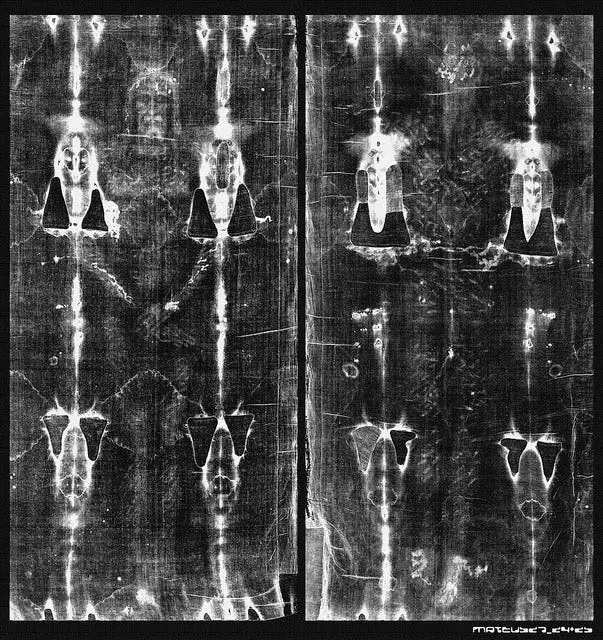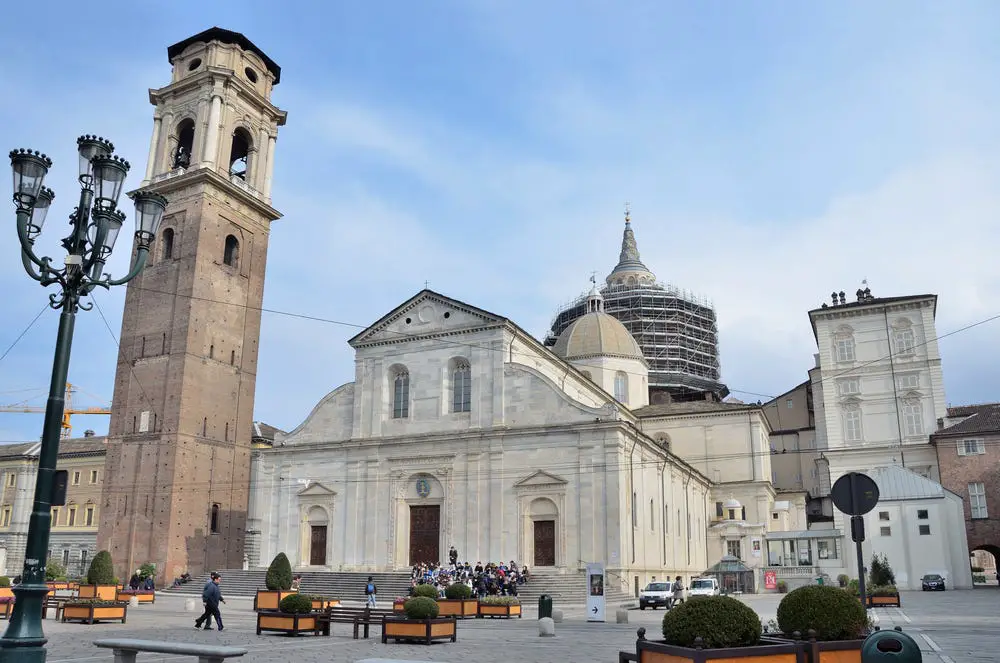The Shroud of Turin is a centuries-old linen cloth that appears to be a crucified man, believed by many to be that of Jesus Christ. It has become one of the most studied artifacts in human history. The amount of research on the cloth has been mind-boggling, being studied for hundreds of thousands of hours, but the controversy continues. Researchers have been unable to definitively prove the shroud is a forgery or if it is authentic.
One such bit of controversy relates to the carbon dating of the shroud. A piece of the shroud was split and tested in laboratories in Switzerland, England, and the United States in 1988. The carbon-14 dating placed the cloth in the time frame between 1260 to 1390 A.D. The scientists concluded that the shroud was a medieval hoax.
But a 2011 analysis by Italian scientists revealed that the part of the cloth that had been tested might have come from a portion of the shroud that had been repaired by an order of nuns after it had been damaged in a fire during the Middle Ages. Their research using infrared light and spectroscopy dated the shroud between 280 B.C. to 220 A.D.
In a more recent study in 2018, a pair of Italian researchers conducted tests using fake and real blood on a simulated shroud. They wanted to determine if bloodstains on the shroud represented what was reported in the Bible. They said that bloodstains on the shroud were inconsistent with reports from the Bible. Like so many other studies, their findings opened up even more questions about their methodology.
The shroud has been moved, transferred, displayed, and handled extensively since the 1300s, so it may be no small surprise that definitive answers to its origin have been hard to come by. The shroud is such a complex research piece that it would be impossible to cover all of the research that has been done in this tiny space, and each new piece of research seems only to open more questions. One of the most basic questions still doesn’t have a consensus. Scientists have no idea how the image even got fixed to the cloth.
The shroud is currently housed at the Cathedral of Saint John the Baptist in Turin, Italy, and is in an airtight, bulletproof container that also keeps out ambient light. It is controlled for humidity and temperature, and the inside of the container is composed of 95% argon gas and 0.5% oxygen to preserve the piece.
The Historical Background of the Shroud
The history of the Shroud of Turin begins in 1353, when a French knight, named Geoffroi de Charny, brought it to a monastery in Lirey, France. There is no history of the shroud before this time. Around 1389, the bishop of Troyes, France, Pierre d’Arcis, sent a message to Pope Clement VII, saying that the shroud was a fake and that an artist had confessed to forging it. The pope declared that the shroud wasn’t that of Jesus Christ, but he allowed the church in Lirey to continue to display it as long as it was known as an “icon” and not a “relic.”
In 1453, the shroud was sold by Geoffroi de Charny’s granddaughter, Margaret, to the royal house of Savoy (which later ascended to the Italian throne) in exchange for two castles. She was excommunicated from the Catholic Church because of the sale.
The shroud was moved to the city of Chambéry, France, and in 1532, it was damaged in a fire. This was when an order of nuns, as was mentioned earlier, repaired the shroud. In 1578, the shroud finally made its way to its current home in Turin, Italy. It was moved there by the Savoys and put in the chapel of the Cathedral of Saint John the Baptist.
The research on the shroud began in 1898 when Secondo Pia, an Italian amateur photographer, discovered that the reverse negative of a photograph he had taken of the shroud revealed a bearded man with wounds on his body. The first scientific study of the shroud took place in 1969, when scientists were allowed to examine the shroud. This was followed by the Shroud of Turin Research Project in 1978 when scientists were given five continuous days to examine the shroud.
As a side note, the Vatican still does not recognize the Shroud of Turin as a “relic” and still uses the term “icon.” The Catholic Church has not taken an official position on the shroud’s authenticity. The Catholic Church took legal ownership of the shroud in 1983.



